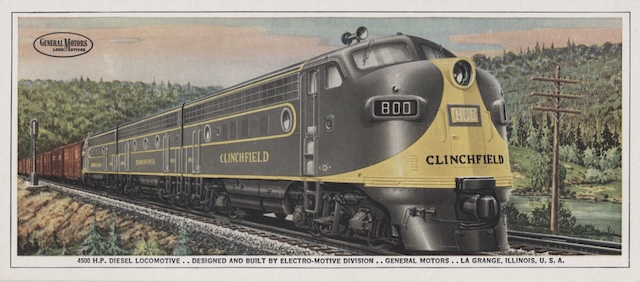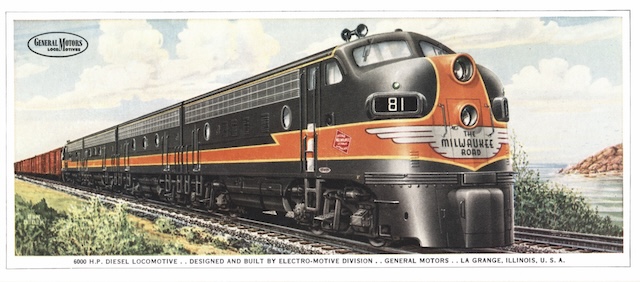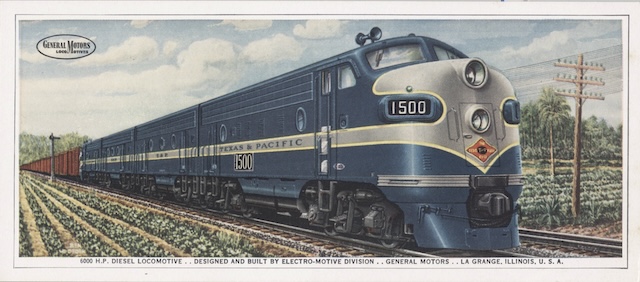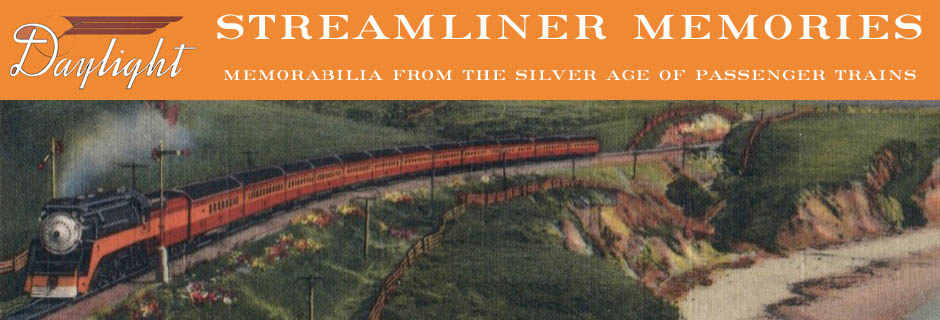According to Wikipedia, GM began producing F7s in February 1949. The F3 and F7 were both rated at 1,500 horsepower, and while Wikipedia says the F7 had 20 percent higher tractive effort than the F3, that doesn’t show up on the data cards. Despite yesterday’s question about buyer’s remorse, I suspect railroads just bought the latest locomotives available without worrying too much about the designations. However, instead of stepping up from F3 to F4, F5, F6, and F7, GM leapt from F3 to F7. This was mainly because the E locomotive being made in early 1949 was an E7.

This card is signed by Ben Dedek.
F7 production may have begun in February 1949, and according to a Clinchfield history site, locomotive 800 was an F3 built in 1948. Yet this card clearly says it was an F7. However, the history site adds that the locomotive was later rebuilt to F7 standards, so perhaps that’s when this card was made.

This card is signed by Ben Dedek.
Similarly, for Milwaukee Road 81, the card describes it as an F7, but a history site says it was built as an F3 in January 1949. Perhaps it was also upgraded to F7 standards. In any case, after buying only 16 F3s, Milwaukee Road bought 118 F7s.

This card is signed by Ben Dedek.
This locomotive is indisputably an F7 and one of the first ones produced, having been built in February 1949. I previously asked whether it was a coincidence that E7s produced 2,000 horsepower and T&P numbered its E7s in the 2000s. It doesn’t appear to be a coincidence as here the F7 produced 1,500 horsepower and T&P numbered its F7s in the 1500s.

This card is signed by Ben Dedek.
The Kansas, Oklahoma and Gulf Railway went about 310 miles from southeast Kansas to Denison, Texas, one mile across the Oklahoma-Texas border, falling short of the gulf by a few hundred miles. In April 1949 it received two three-unit F7s, which were probably the first Diesels it owned. The KO&G was formally acquired by the Texas & Pacific in 1963, but the similar paint schemes suggest they were already closely associated in 1949.

I don’t see a signature but it looks like Ben Dedek’s work.
The Texas Mexican Railway was another short line that operated 160 miles of track from Corpus Christi to Laredo. In 1939 it became the first railroad of its size or larger to completely Dieselize when it bought seven Diesel locomotives from a company called Whitcomb. In May 1949 it received two F7s, numbered 800 and 801.
